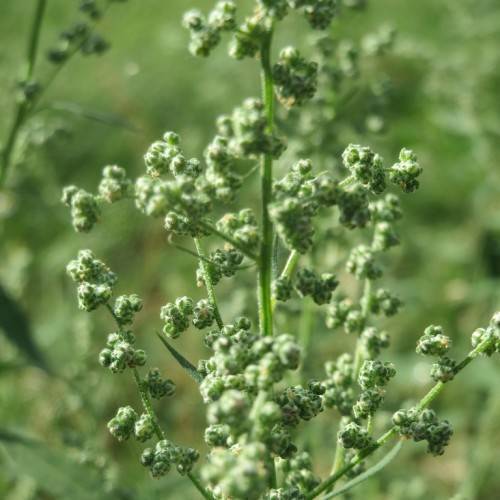
Woodland Goosefoot
Chenopodium standleyanum
Also Known As - Standley GoosefootWatering:
Average
Hardiness Zone:
Flowers:
Flowers
Sun:
Partial Shade
Soil:
Clay, Sand, Loam
Leaf:
Yes
Growth Rate:
Low
Salt Tolerant:
Yes
Care Level:
Medium
watering
Watering Woodland Goosefoot (Chenopodium standleyanum) is best done when the soil feels dry, about once per week. During hot, dry weather, increase watering to help the plant stay hydrated. Too much water, however, can be harmful, so keep an eye on the moisture levels of the soil. Too little water can cause the leaves to yellow and the plant to wilt; a sign that it needs to be watered. When watering, use lukewarm water and drench the soil evenly so it can evenly hydrate the plant. Make sure you discard any water that collects at the bottom of the pot to prevent waterlogging and root rot. Incorporating mulch helps retain moisture in the soil and reduce the amount of watering needed for Chenopodium standleyanum.
sunlight
Woodland Goosefoot (Chenopodium standleyanum) is a low-growing plant species that prefers partial shade or filtered sunlight. The plant should be situated in a spot that receives 4 to 6 hours of dappled sunlight each day. The woodland goosefoot prefers the morning sun and afternoon shade, as too much direct sunlight can cause the leaves to dry out and become a paler shade of green. From April to September, the ideal amount of sunlight for this species would be 6 to 8 hours a day. During the colder months of cultivation, the species should be exposed to 3 to 5 hours of sunlight each day.
pruning
Woodland Goosefoot is a fast-growing, herbaceous plant and it requires regular pruning to maintain a healthy form. Prune the plant in early spring, before new growth starts. Cut back the old stems to within an inch of the ground, making sure to remove any dead or damaged stems. This will help to promote fresh, new growth. Pruning can also be done throughout the season, as needed, to remove any dead or damaged stems and keep the plant at a manageable size.
